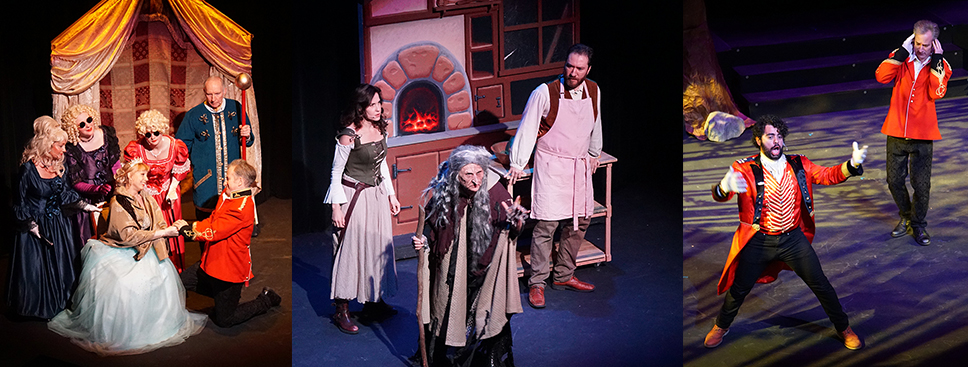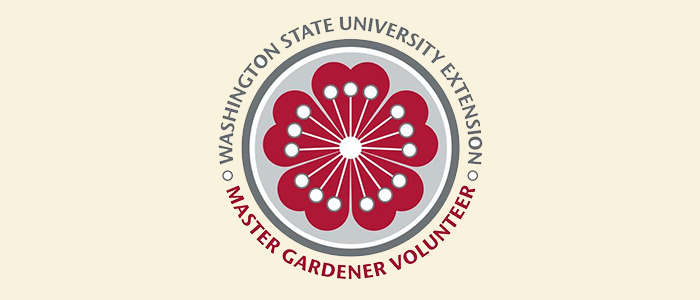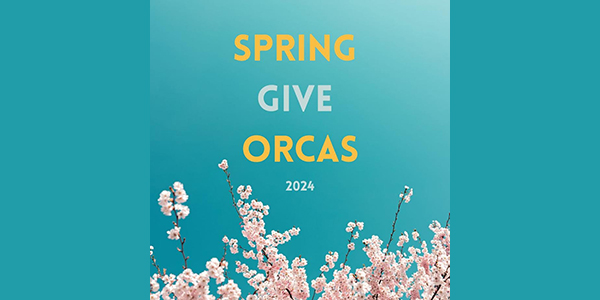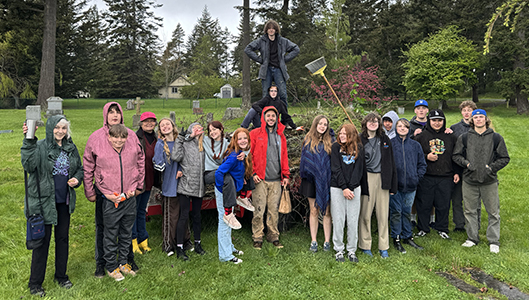— by Ken Katz —
No one person owns our roads, libraries, schools and parks. These are for us to use now and preserve for future generations. We are all stakeholders of public assets in our community, the nation, and the world.
All of us have different needs and wants from these assets. For example, a single person without children can still be invested in our public school system. They want their cousin who is a teacher to be well compensated; they want their neighbors’ children to be well educated so that our community can replace its current doctors. They pay taxes toward the school, vote for levies, and attend football games. They don’t have a direct stake in day-to-day activities, but have an equal common interest in the well being of the school.
Our public roads are similar. The people who live directly on a road will use it more often and have different needs from those heading to a weekly family dinner, working for six months on a construction project, or just taking the long way. These people all have different uses of the public asset, yet contribute to the tax base that pays for the maintenance of our roads. Each driver, bicyclist, horse rider or pedestrian will have a different, yet valid perspective on a road. The 6 Year TIP is open to public comment because Public Works needs to hear from all of these stakeholders.
I have been on EPRC for over 5 years. I live 2.5 miles from town, and don’t own property or have a business there. Yet I have met every month because I represent a different type of stakeholder: the everyday person who shops and socializes in town. The group has worked, as volunteers, to update the Eastsound Subarea Plan, a document designed to guide development in the Eastsound UGA. The plan was adopted in 1981 and 35 years later—though it is continuing to evolve—it is steadily guiding the growth in Eastsound such that it remains true to the vision originally laid out: a walkable vibrant commercial hub set in a rural environment. It wouldn’t be right for only the Eastsound property owners to be making decisions about the town that belongs to all of us.
There have been other groups that have worked with the County to develop guiding documents for County officials and employees to follow. The Comprehensive Plan is a large one, the Scenic Roads Manual a smaller one. These documents explain the vision for the development of our islands so that as different people come and go through government, this vision stays steady. Each document starts by emphasizing the critical importance of preserving our rural heritage for the future. These are the guiding principles of the rules that are codified afterwards and cannot be ignored by current public officials and employees of the County in favor of their own beliefs.
We all have an equal voice; each person has a say in how our society works and evolves. A petition or protest is part of the fabric of American Democracy. It allows citizens an opportunity to communicate as a group with officials in between elections. It actually requires more of the citizen because, unlike the anonymity of voting, they have to publically declare by signature their belief to their leaders. It is used at every level of government all the way to White House and should not be discounted by our elected representatives. County Council and Public Works need to listen to all of the voices that wish to be heard when they make their decisions; it is their job and their sworn obligation to the public.








Mr. Katz,
We agree with just about everything you say except when you say that signing a petition “actually requires more of a citizen because, unlike the anonymity of voting, they have to publically declare by signature their belief to their leaders.” What you say does NOT always mean they believed in whom or what they signed for. There are some people who have rescinded their names from the Dolphin Bay Road petition because of exactly that reason. They trusted some of the folks who sponsored the petition and signed prematurely.
Here’s what Forbes magazine had to say about Change.org, the venue for the “Save Dolphin Bay Road” petition-
“But the site’s greater impact may be the thousands of lesser-known petitions–15,000 are created monthly–started by everyday Joes who blast their call for signatures through their e-mail directories and social networks. Responding to one of these petitions is the ultimate in armchair slacktivism. Check a box because a friend of a friend tells you to, and you have done something good for the day.”
Of course County Council and Public Works will “listen to all of the voices that wish to be heard.” Personally, I feel it an insult to them to say that they wouldn’t as the latest petition headlines read.
And then, hopefully the Council will decide on the importance of saving lives and preventing more injuries to human, animal and plants alike by voting to chip seal part of Dolphin Bay Road.
Ron and Maggie
I say chipsealing in and of itself does not a scenic road destroy.
It could also be argued that chipsealing enhances the scenic quality of a rural road by eliminating dust accumulation on adjacent flora, bone-rattling washboard road surfaces, enhancing air quality, and heaven forbid, by attracting a greater number of bikers and motorists keen on experiencing the wonders of s curvy scenic road with its many mysteries just around the bend.
Ken references “guiding documents for County officials and employees to follow” such as “The Comprehensive Plan…(this) document explains the vision for the development of our islands so that as different people come and go through government, this vision stays steady. Each document starts by emphasizing the critical importance of preserving our rural heritage for the future.” As the chair of the Orcas committee to rewrite the Comprehensive Plan (1992-1998), and one of 5 petitioners to challenge the plan as an egregious violation of the Growth Management Act under which it was written, I strongly encourage readers to learn what our “vision for the development of our islands” is and how far that Vision is from the comprehensive plan that is supposed to enable it. Our committees spent a year developing the Vision, which was ratified by the then BOCC in 1993. You can read, make your own judgement, and comment about this still unresolved disconnect at “doebay.net/appeal”. The Vision hasn’t changed; it indeed emphasizes preserving our rural heritage. The plan, however, makes a mockery of this vision. You won’t figure that out by reading the plan, however, unless you are a professional planner and know how to penetrate inscrutable, misleading and in some cases unavailable information buried (if it exists) in the Appendix. You need a context, which you will find at the web site mentioned above. I have been here for over 40 years, have seen the population of the county quadruple, and care immensely for wise stewardship and thoughtful leadership in preserving a unique and beautiful archipelago. Read the Vision, read the reality, and start an honest conversation about how to transform the plan to meet the Vision. It must begin with you.
I agree with Fred. I believe the beauty of Dolphin Bay Road will only be enhanced by chip sealing. Chip sealing enhances the road’s quality, usability, safety and ease of maintenance without impacting the scenic nature.
Martin
I’m concerned cars will drive much faster if Dolphin Bay Road is paved. Faster is not safer, especially for pedestrians, horses, kids, and bikes. I regularly walk on the road with horses, kids, or both. I try to wear bright colors for safety and wave to drivers passing by. Most drivers slow down and wave back. It is scary when any vehicle is speeding. There will be more speeding if paved. DOT surveys show clear consensus that speeds increase after paving.
Reverting to a lower speed limit is an easy way to make it safer and also reduce road damage. Dolphin Bay Road used to have 15 MPH signs on dangerous corners, but the County replaced them with 25 MPH with no explanation nor communication with residents. The road does have potholes and washboards, nature’s speed bumps helping drivers to slow down. The road is a few years overdue for gravel, as the County has put it on hold because of plans to pave.
I’m also concerned about cars not sharing the road with non-motorized users if it gets paved. Dolphin Bay Road is home to kids, bikes, horses, dogs, deer, newts, walkers, joggers, mushroom pickers, baby strollers. Sharing is implied on a dirt road without a pavement edge to separate pedestrians from cars. With pavement, drivers tend to feel entitlement to the whole road. Non-motorized users are generally expected to get off the pavement and allow cars to pass, forcing non-motorized into the grass, ditch, or cliff. Paving would be a win for cars, and a loss for everyone else.
Our family lives at 2562 Dolphin Bay Road. There are only a handful of full-time residents here. We have an old garden right by the road and are one of the few residents along the road itself. Most neighbors live on long side roads which are also gravel (Raintree, Silver Moon, Iottes, Shaner Armstrong). Our neighborhood knows about gravel roads, driving slowly and posting 10 or 15 MPH signs on side roads to keep them in good shape, like many others on Orcas who live on gravel roads.
Our family chose to live on Dolphin Bay Road, escaping from pavement, knowing this is a gravel road with bumps and dust. I love the trees stretching their branches over the road to bless travelers and feel our pulse. The maples toss their love notes onto the dark earth. This road teaches us mindfulness as we walk with our kids to collect litter. If paved, speeding will raise more safety concerns and calls to make it wider, cut back trees, and straighten curves. Another win for cars.
Last fall, I suddenly realized it may be the last time to see Dolphin Bay Road as dirt with golden leaves laying on it. I contacted Peter Fisher to come out to capture it in photos. This is exactly the kind of road that should not be paved according to our County’s Scenic Roads Manual. But aside from the beauty at stake, the photos show the road’s numerous curves and blind corners which will be even less safe due to more speeding if paved:
http://www.savedolphinbayroad.org/photos.html
Please don’t pave Dolphin Bay Road. We need other solutions for safety, not paving.
A unidentified bard, probably a native of New York City and undoubtedly a practitioner of slacktivism (that was new one to me – love it) wrote “nothing is more certain than death, taxes and pot holes” Will chip sealing eliminate pot holes on Dolphin Bay Road?